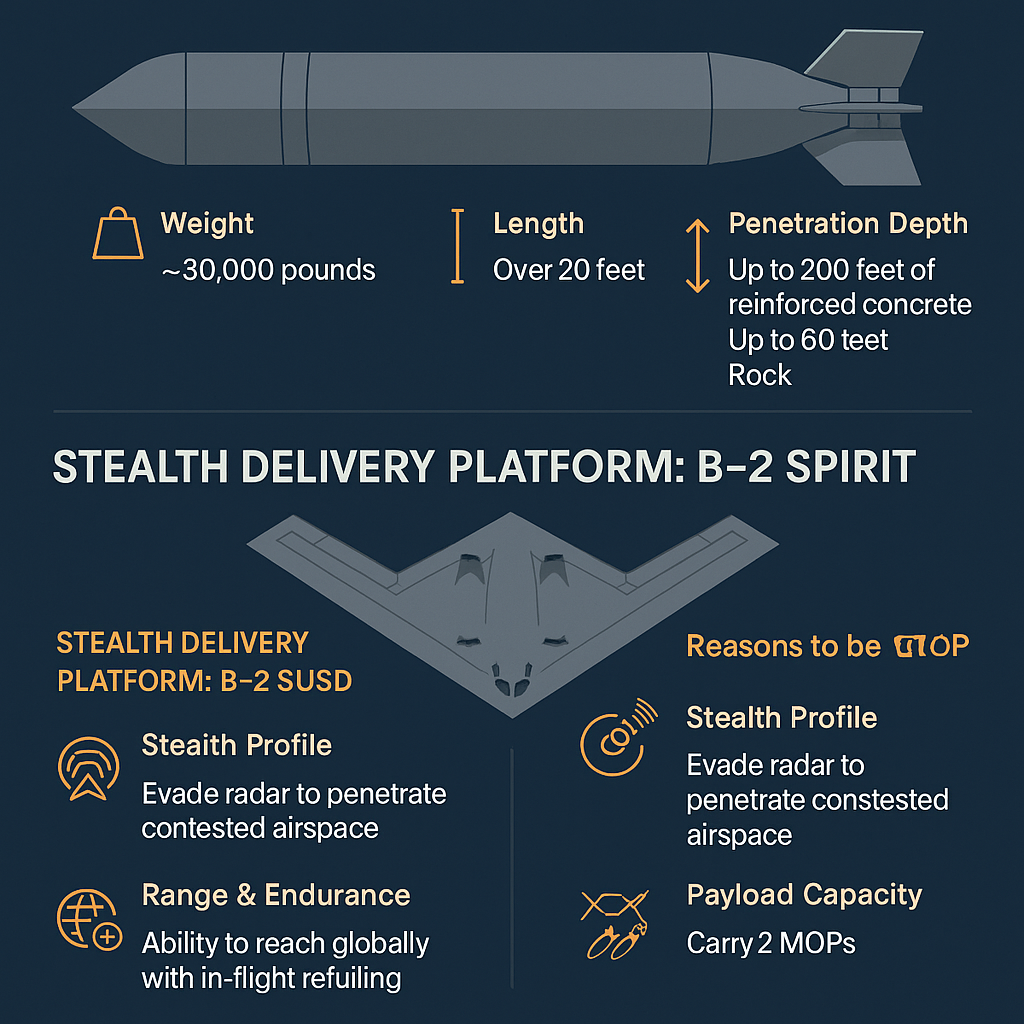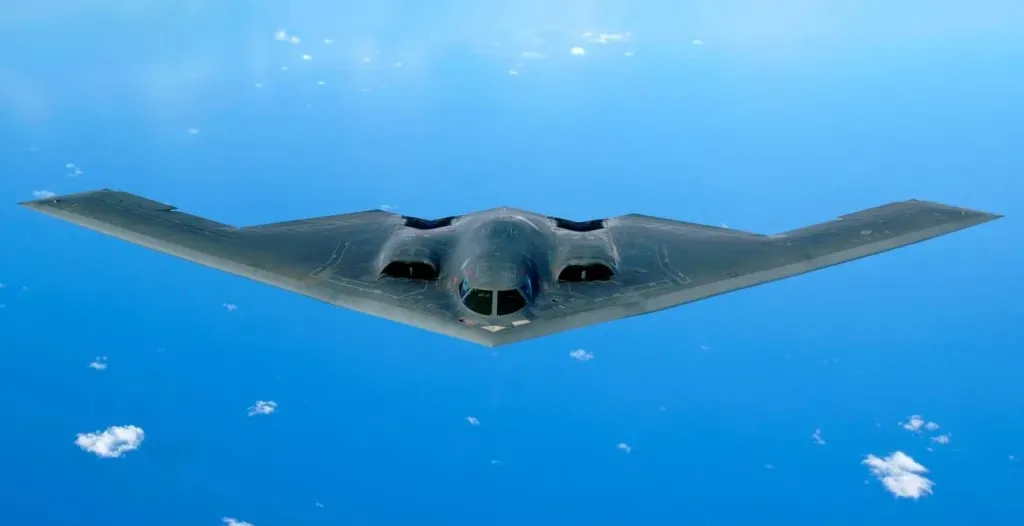As tensions rise in the Middle East and the specter of preemptive strikes against Iran’s underground nuclear facilities looms, attention has turned to one of the most formidable weapons in the U.S. arsenal: the GBU-57A/B Massive Ordnance Penetrator (MOP). Delivered exclusively by the B-2 Spirit stealth bomber, this weapon system embodies the fusion of advanced engineering, stealth tactics, and precision targeting in modern strategic warfare.
This strategic defense analysis explores the technical features of the MOP, the operational design of B-2 missions, and their relevance in shaping the U.S. military’s deterrence and first-strike capabilities.
The MOP: Designed to Defeat Deeply Buried Threats
The Massive Ordnance Penetrator is not just a large bomb—it’s a purpose-built weapon for destroying deeply buried hardened targets, such as nuclear bunkers, command centers, and fortified missile silos.
Key specifications:
Weight: Approximately 30,000 pounds (13,600 kg)
Length: Over 20 feet (6.2 meters)
Penetration Depth: Designed to burrow through up to 200 feet of reinforced concrete or 60 feet of hard rock before detonation
Warhead: Conventional explosive payload of approximately 5,300 pounds
Unlike thermonuclear weapons, the MOP relies on kinetic energy and delayed detonation to collapse subterranean structures without triggering surface-level nuclear contamination—a critical feature in politically sensitive environments.
Stealth Delivery: The Role of the B-2 Spirit
Only one aircraft in the world can deliver the MOP: the B-2 Spirit, the U.S. Air Force’s flagship stealth strategic bomber. This pairing is intentional and strategic.

Why the B-2?
Stealth Profile: The B-2 is engineered to evade radar and advanced surface-to-air defenses, allowing it to penetrate contested airspace undetected.
Payload Capacity: The B-2 can carry two MOPs simultaneously in its internal bomb bays.
Range & Endurance: With in-air refueling, the B-2 can reach any point on the globe from its home base at Whiteman Air Force Base in Missouri, making it a vital asset for global power projection.
Mission Planning: A Layered Strategic Operation
Conducting a successful MOP strike using a B-2 requires meticulous mission planning involving multiple layers of intelligence, electronic warfare, and in-flight coordination.
1. Target Intelligence
Mission planners rely on satellite surveillance, geospatial imagery, and human intelligence (HUMINT) to confirm the exact location, depth, and fortification of the target. Nuclear enrichment sites like Fordow or Natanz in Iran present complex targets buried under mountain rock and reinforced concrete.
2. Electronic Warfare Preparation
Prior to a MOP strike, U.S. forces may deploy electronic jamming units, including EA-18G Growlers and cyberattack assets, to disable enemy radar, GPS, and communication networks. This “softening” phase maximizes the B-2’s chances of entry and exit without detection.
3. Flight Path Optimization
The B-2’s route is calculated to avoid known radar zones, missile batteries, and airbases. It often involves low-altitude flying across oceans or mountainous terrain, then ascending briefly to optimal altitude for weapon release.
4. Timing and Coordination
A successful strike often occurs at night or in early morning hours to reduce visual detection and maximize confusion. The mission may also be coordinated with satellite overpasses or drone reconnaissance to confirm hit accuracy and conduct post-strike damage assessment (PSDA).
Strategic Value in the Middle East Theater
In the current U.S.–Iran strategic context, the MOP-B-2 capability presents a credible deterrent and a surgical offensive option that is politically preferable to a full-scale invasion or nuclear engagement.
While Israel’s own arsenal—including the smaller “Rampage” and “Spice” bombs—may struggle to penetrate facilities like Fordow, the MOP offers a unique capability to cripple Iran’s nuclear timeline in a single strike without inflicting mass civilian casualties.
Furthermore, the use of conventional bunker-busters aligns with international law and offers a measured response, should diplomacy fail or Iranian provocations cross a defined red line.
Risks and Limitations
Despite its power, the MOP is not without constraints:
Intelligence dependency: Missed or inaccurate intel can render the strike ineffective or cause collateral damage.
Political ramifications: Even a conventional strike could provoke severe retaliation and ignite regional escalation.
Limited inventory: The U.S. maintains only a small stockpile of MOPs due to their complexity and cost.
Moreover, a strike would not eliminate Iran’s nuclear know-how—it would delay progress, but not erase institutional memory or engineering capability.
Conclusion: The Sword in the Shadows
The MOP and B-2 Spirit together form one of the most potent, precise, and politically adaptable tools in the American strategic arsenal. In a geopolitical landscape where deterrence and deniability walk hand in hand, this combination allows the U.S. to strike deep and hard—without crossing the nuclear threshold.
For policymakers and defense strategists, the focus must now turn to the timing, messaging, and consequences of deploying such a tool—not just its capabilities.

